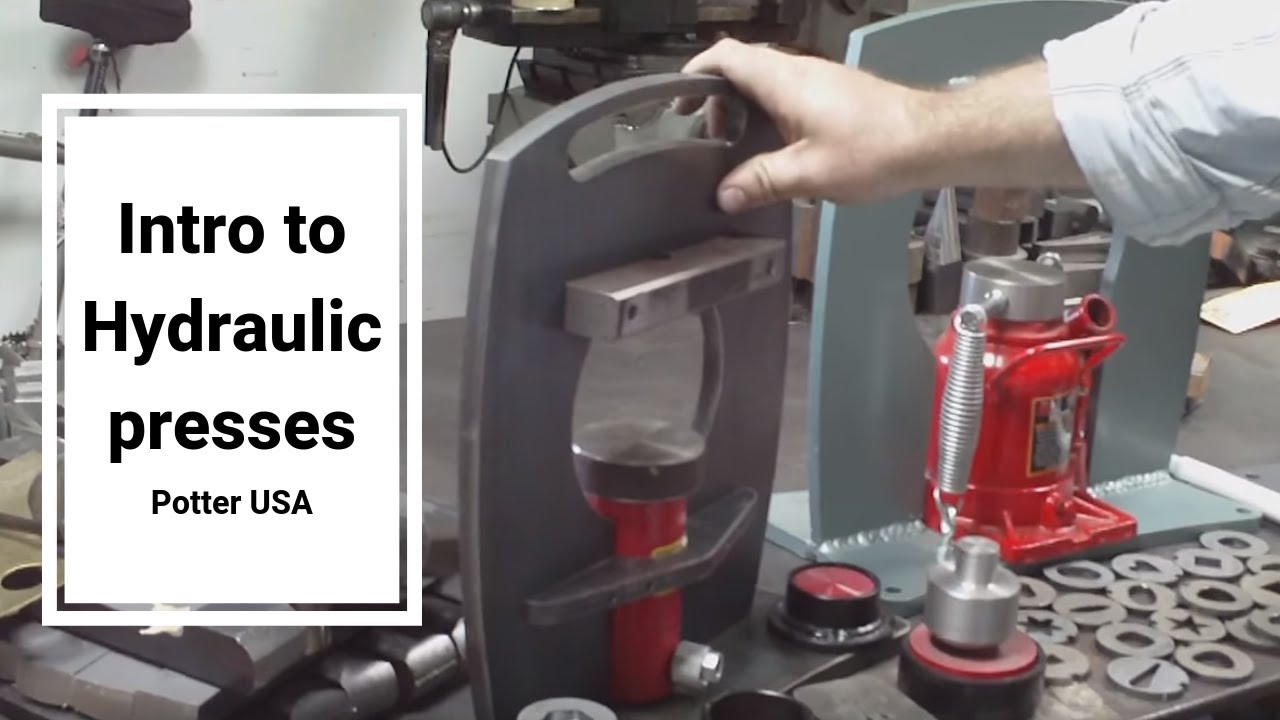But in my humble opinion, individual jewelers seem in general more
concerned than necessary about the above type of 'theft"
I would have preferred to let this thread go, but I feel I must
defend, or at least explain my and other’s concerns.
Zev, with all respect, I wonder if you would view these concerns as
unnecessary if it was the theft of your design and the negative
effect that theft had on your livelihood that we were talking about.
I think the reason individual jewelers get upset about this kind of
thing is that we, pretty much as a whole, are subject to it all the
time, from both sides of the issue. If your house burns down, all of
a sudden you begin to pay more attention to the things that cause
fires.
Consider that the Doon press is simply a hydraulic jack (used for
many decades for lifting and squeezing) mounted in a welded frame.
Of course the Bonny Doon press at first glance is a variation of the
same kind of hydraulic press used in the automotive industry. But
examined in more detail, it is far more than just a welded frame with
a hydraulic jack. The designers went to great lengths to increase the
safety for end users. They increased the strength of the frame
substantially, not only through the use of heavier metal but through
engineering a much stronger design and subjecting it to rigorous
testing and improvement. They also incorporated features that make it
far more useful to metalsmiths than a generic press designed for
installing wheel bearings. They also put considerable effort and
money into marketing their products and convincing people that their
designs and products were superior. The main reason they did all of
this was to put food on their tables and put their kids through
college.
Please understand, I’m not accusing anyone of doing the following,
I’m using it as a demonstration of my position.
When someone takes measurements of that specific design to a shop
without the permission or approval of it’s designers to have it
reproduced in detail for the sole reason of saving money, they are
using someone else’s labor, financial investment, knowledge and
experience unfairly and are in effect, cheating the designers out of
their hard work and their return on their investment. If the design
has a patent in effect, they are also breaking the law. That is a
completely different thing than drawing up a frame design on
someone’s own, or using an older design that is no longer (or that
never was) protected by copyright or patent and going out to the
garage and welding it up.
It is also completely different for someone to use the same basic
concept of a frame mounted jack, examining current designs and
applications and then designing what they consider to be a better,
safer and more useful design than their competitors and pursuing
their own livelihood in it’s development, manufacture and marketing.
That is the essence of what I believe you were referring to in your
comment about copying/combining previous concepts, and I agree, it is
that constant process of competition, evolution and improvement on
which our modern life is built. It’s also why the distributor is on
the front of Ford V8’s and on the back of Chevy’s.
Should we fault him for "stealing" the hydraulic press concept or
"copying" the skill of welding, without with his press would not
be possible?
Patent law was established to allow innovators to reap the harvest
of their work for a limited time without having to worry about others
copying and profiting from their work. Without this protection, much
of the incentive to innovate would be removed, and creativity and
evolution might be severely curtailed. Patents have expiration dates
specifically to allow for the evolution you referred to. Brand name
and generic drugs come to mind.
It is the legal and ethical protection of those new and original
ideas and the profit that comes from their creation that is at issue.
Surely you must see the difference.
Some of the major jewelry designer/manufacturers have entire legal
departments with the sole purpose of finding, identifying and
stopping copyright infringement. We can disagree about whether the
extent to which they pursue infringement is over the top or not, and
whether a specific design or concept is protectable or not (those
issues can be and often are explored and decided in a courtroom), but
it is my humble opinion that the basic right of an individual or
business to protect their original ideas and designs shouldn’t be a
topic of disagreement, regardless of the professional field. Nor do I
think that coming to someone’s defense when this issue comes up is
unnecessary or just esoteric nit-picking.
Coming up with new, original and innovative solutions to problems or
making substantial improvements to existing ideas is how some people
make their living, and as you point out, is the cornerstone of human
development. Taking such a person’s or firm’s ideas and designs and
directly copying them for personal gain on the other hand, is not
only in some cases illegal, it’s just plain wrong, and I will defend
the original designer at every opportunity. If that makes me
hyper-sensitive to the issue of copyright infringement and the
protection of someone’s livelihood, so be it. That is a position for
which I will not ever apologize.
Dave Phelps
